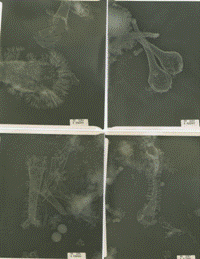Nanoparticles and Nanotechnology for Energy and the Environment
N anotechnology is a recent, revolutionary development in Science and Engineering. It aims at manipulating atoms, molecules, and nanometer-sized particles containing a few hundred to millions of atoms with the goal of creating new materials, devices. It will likely impact virtually all areas of the physical sciences, biological sciences, and health sciences.
Nanoparticle research seeks to exploit the strong size dependence of the physical and chemical properties of nanometer-sized particles. Properties are usually significantly different from those of isolated atoms or molecules and from bulk material. This opens up the opportunity, for instance, to create materials and devices with entirely new properties.
The mission of our laboratory is to understand and manipulate from a fundamental standpoint the physical and chemical phenomena in the formation and application of nanoscale materials.

Our Current Research Activities
- Develop new synthesis methods to make nanoparticles with interesting and in some cases unique properties using thermal, flame, and plasma reactors
- Materials for solar thermal production of fuels
- Materials for chemical looping combustion
- Formation of ultra-high surface area nanoparticles
- Formation of new classes of materials with high energy release
- Develop and apply molecular based modeling tools for understanding gas-to-particle conversion and nanoparticle properties
- Use of molecular dynamics and Monte Carlo methods to understand properties and reactivity of nanoparticles
- Development of new instrumentation for the characterization of reacting flows and nanoparticles
- Development of new single-particle mass spectrometric methods to characterize the composition of individual nanoparticles
- Development of on-line real time methods to study the reactivity of nanoparticles e.g. oxidation of soot, combustion of metal nanoparticles
- Development of ultra-fast mass spectrometry methods.
FOR MORE DETAILS SEE OUR PUBLICATIONS LINK
Click for the safety sheet and the chemical hygiene plan.
